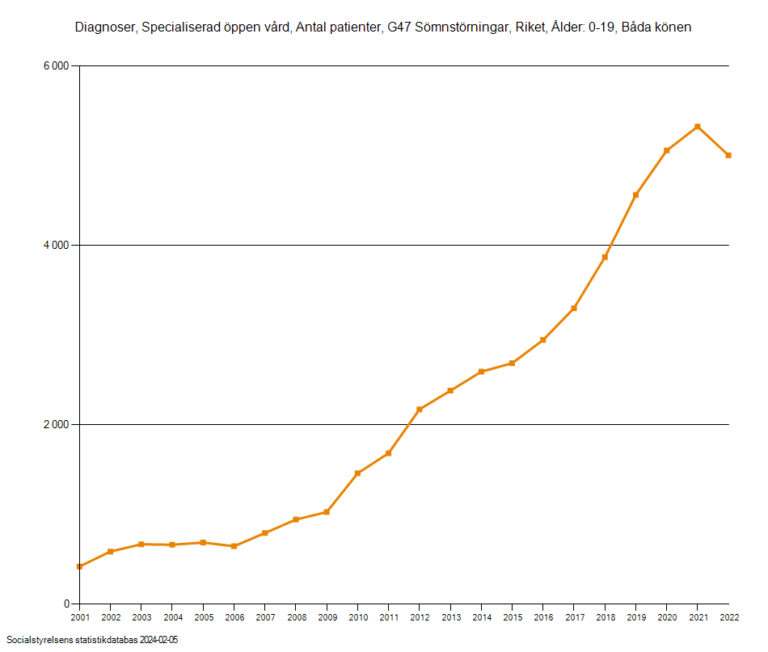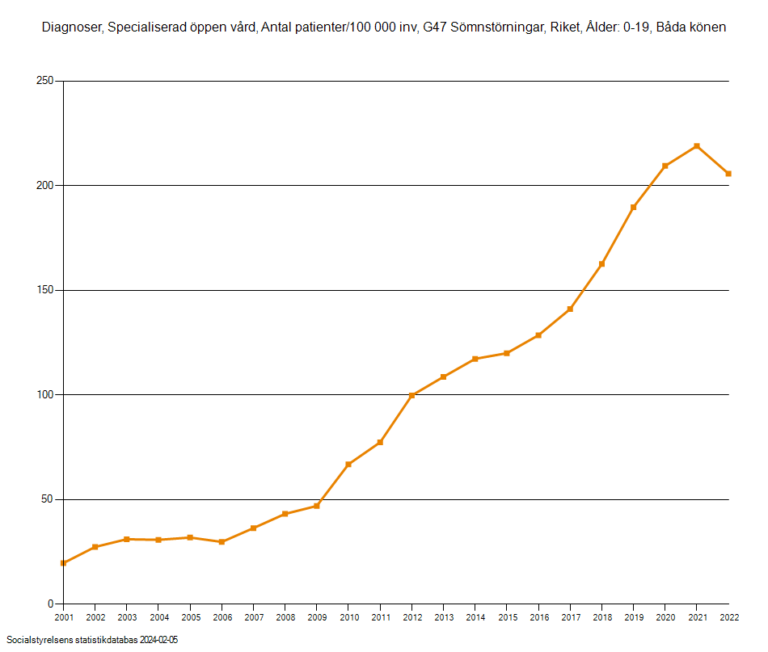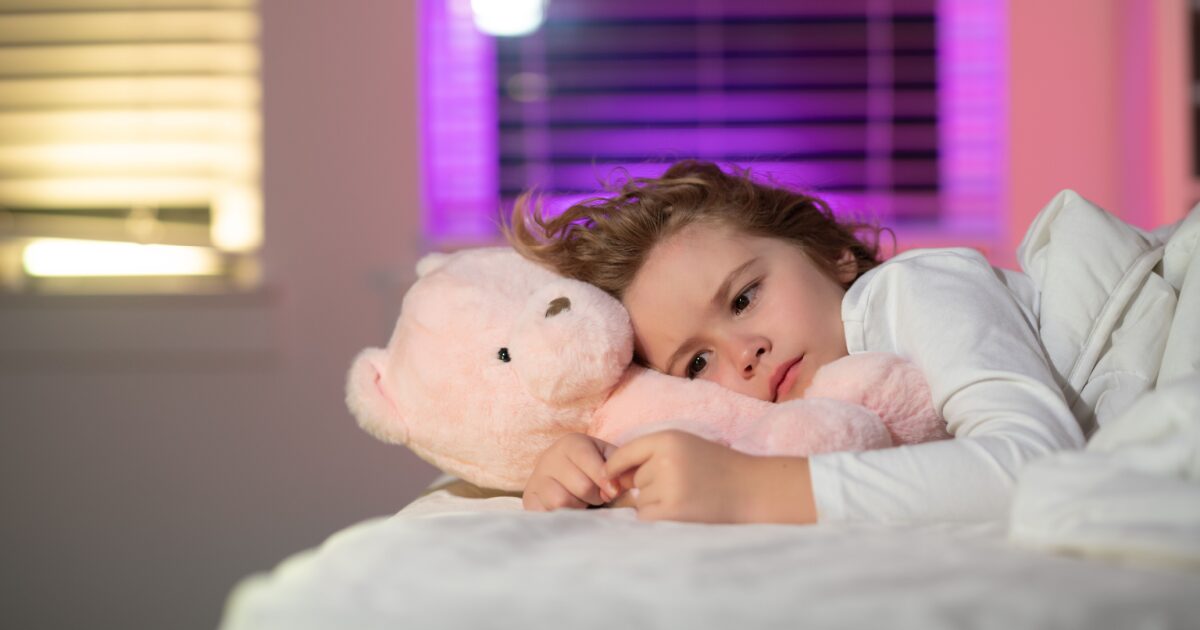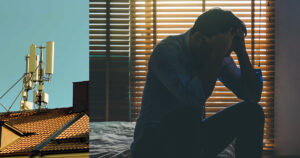In the last fifteen years, sleep disorders among Swedish children aged 0-19 have increased significantly, as has the prescription of sleeping pills or sedatives. The exposure to radiation from wireless technologies has increased enormously over the same period. Difficulty sleeping is a known effect of elevated radiation.
The Swedish National Board of Health and Welfare each year publishes data on the number of people who each year sought treatment in specialized outpatient care and the diagnoses they were given. The data for the years 2001 to 2022 show that the number of children aged 0-19 years who each year were diagnosed with sleeping disorders has increased very significantly. In 2001, 421 children were diagnosed but in 2022 the number had increased to just over 5000. The chart below shows the number of patients aged 0-19 each year 2001 to 2022 with sleep disorders. The second chart shows the number of patients each year between 2001 to 2022 of the same age per 100,000 inhabitants. Note that there is a lag time in the reporting of patients to the register that may explain the dip in the last year, 2022. Source of all charts: National Board of Health and Welfare statistics database:

Per 100 000 k inhabitants.

Sleeping pills and sedatives
During the same period, the prescription of medicines and sedatives to children in the same age group 0-19 years has also increased significantly. According to the National Board of Health and Welfare’s pharmaceutical register, the number of patients aged 0-19 years prescribed sleeping pills and sedatives has increased from 7073 in 2006 to 90 674 in 2022. This is a 12-fold increase.

Sleeping pills and sedatives to children 0-19 years per 100 k inhabitants:

Radiation from wireless technologies causes sleep disorders
It has been known since more than 50 years that radiation similar to that emitted by wireless technologies can cause sleeping problems. This was described in a book published in 1971 by, among others, a director of the Czechoslovakian Institute for Occupational Safety and Health, which investigated the impact of microwave radiation on people exposed at work. Some 200 workplaces were investigated and one of the main symptoms resulting from this form of radiation that emerged was sleep disturbance.
The effect on sleep has been further documented over the last 20 years in studies of people exposed to radiation from wireless technologies. Repeated surveys of health conditions near mobile phone masts have reported that people living in the vicinity are more likely to suffer from sleep problems.
In the seven case studies on the health effects of 5G published so far, sleep problems are the most commonly reported symptom. In one of these case studies, three children aged 4-8 years suffered from sleep problems during a holiday stay 125 metres away from a 5G mast.
When the Swedish Radiation Protection Foundation is contacted by people affected by elevated radiation in their homes, sleeping problems are among the most commonly reported symptoms.
In addition, the increasing use of mobile phones and tablets probably plays a role in the negative development. Research has clearly shown that the use of tablets and mobile phones is detrimental to children’s sleep. In 2016, the Swedish Radiation Protection Foundation reported about a scientific study involving 125 000 children.
One of the researchers behind the study, lead author Ben Carter from King’s College London, noted that the study provides further evidence of the harmful impact of digital media on the duration and quality of sleep. He warned that sleep deprivation can have other health consequences in the long run:
“Sleep is an often underestimated but essential part of children’s development. Recurrent sleep deprivation ultimately leads to a range of health problems.”
Ben Carter added that the increasing use in schools and nurseries would further exacerbate sleep problems among children and young people:
“With the rising use of portable digital devices and the increasing use in schools as a substitute for books, sleep problems among children are likely to increase.”







